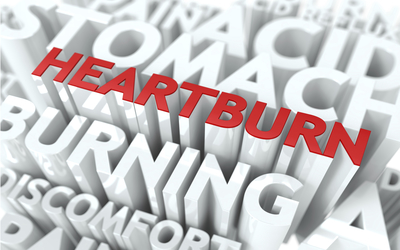Oesophagitis – It’s More Common Than You Think
Have you ever eaten a meal and then felt a burning sensation in your throat later in the evening? You may have been suffering with acid reflux – this is when the acid from the stomach rises up into your gullet and leads to heartburn. This problem can be spurred on by certain foods, such as chocolate or spicy foods, and is usually treated with medication to reduce the amount of acid produced by the stomach. However, some people require long-term daily treatment to keep the symptoms at bay. When we eat, food passes down the oesophagus into the stomach, and the cells in the lining of this organ works with other chemicals to digest the food. There are also cells which line the oesophagus but these offer little protection against the acid from the stomach. The circular band of muscle which acts as a junction between the gullet and the stomach is known as the sphincter and this usually tightens and stops food and acid from leaking upwards. However, this doesn’t always work effectively which means that some acid can leak into the gullet and cause discomfort.
Acid reflux refers to the problem of stomach acid leaking into the gullet, whereas oesophagitis refers to the inflammation of the lining of the oesophagus. Usually, this is due to the reflux of stomach acid which irritates the lining and leads to a burning sensation. The lining of your gullet will withstand a certain amount of acid, but this amount will vary with different people and some are more sensitive than others. The general term for this condition is known as gastro-oesophagul reflux disease, which is the term used for the symptoms of acid reflux, with or without the oesophagul symptoms. Your symptoms will vary, depending on how sensitive you are, but you may suffer from heartburn as this is the most common symptom. This is a burning sensation which emanates from the upper stomach and lower chest up to the neck. Other symptoms include an acidic taste in the mouth, feeling sick, bloating, indigestion, a burning sensation when you swallow hot drinks and pain in the stomach and chest. More rare symptoms include a persistent cough, gum problems, bad breath, wheezing and feeling a lump in your throat. Regular heartburn is common in people who drink alcohol regularly or smoke, as well as those aged between 35 and 64 years old.
If you have the typical symptoms, its rare for your GP to need to run a test – they can usually tell by your description of your symptoms. In the rare case that you will need a test, the usual port of call will be a gastroscopy which is a thin telescope which is passed down the oesophagus into the stomach to allow the doctor to look at the lining of the stomach. Other tests include a chest x-ray or a heart tracing, but these aren’t typical and are only needed when traditional treatment doesn’t work.
You can reduce the risk of developing this problem by giving up smoking, avoiding spicy and sugary foods or any meals which bring the problem on, losing weight if you are overweight, and improving your posture. If you have this problem regularly, it may be worth keeping note of your symptoms so that you can tell your doctor in more detail what is causing the issue. They will then be able to advise ways to reduce the symptoms, as well as prescribing medication to stave off the acidic irritation.


Comments are closed.